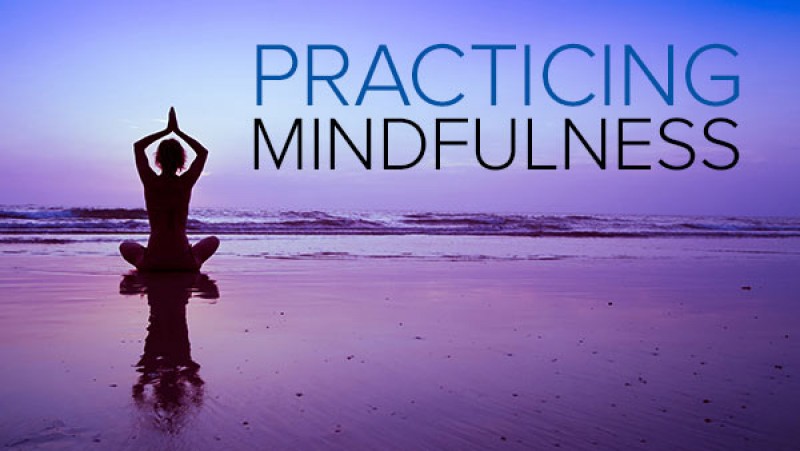
How to Practice Mindfulness: A Beginners Guide
Just about everyone has a hard time appreciating our daily lives. Rather than being grateful for what we’ve, our company is constantly chasing new goals convinced that someplace ahead you will see something better ready.
We feel that if we’re successful enough somewhere later on we will see happiness. But joy works the other way around.
When you see it, this very moment is all that people have. We can’t change the past nor control the near future so why not give attention to what’s actually in your control?
This is what mindfulness is focused on. It’s a way of getting up to our lives. A means of leading your life in a wide open, curious and accepting way where you constantly prefer to get present in as soon as. By doing so mindfulness is the opposite of the every day disconnectedness we’re usually in.
WHY IS THIS IMPORTANT?
When we start our lives in a mindful way we’ve an over-all sense of heightened awareness, peacefulness and physical relaxation. They are certainly great reasons to practice mindfulness in themselves, but the benefits go far beyond that.
A study made in 2011 showed that the cognitive and psychological benefits reported by mindfulness professionals will come from actual physical changes in the brain structure.
In the analysis, 16 participants had MR images taken with their brains before and once they took part in a 8-week Mindfulness-Based Stress Reduction Program.
After spending typically 27 minutes daily rehearsing mindfulness the participants had increased the grey-matter density in the hippocampus (which may be important for learning and memory).
A similar changes were seen in structures associated with self-awareness, compassion and introspection.
On top of that the analysts also noticed a reduction in grey-matter density in the amygdala, which works an important role in handling anxiety and stress.
Thanks to the plasticity of the brain and the practice of mindfulness, we can in fact play a dynamic role in changing the mind and deliberately increase our well-being and standard of living.
MINDFULNESS MISCONCEPTIONS & MISTAKES TO AVOID
Since you start practicing mindfulness sheffield, you’ll likely feel discomfort and be restless rapidly. Know that this is properly normal.
Your mind is merely not used to so few incoming stimulus and can protest by sending you these signals. When you are feeling this little discomfort, stay static in control and won’t immediately surrender to the temptation to give up.
A lot of people possess the misconception that meditation is about emptying your brain completely and get increasingly annoyed whenever a thought steals their attention. This isn’t true.
Actually, sucking at meditation is in fact best for your self-control and willpower. A lot more you lose emphasis, a lot more you practice your willpower every time you bring it again.
If you’re just starting out, you’ll likely feel awkward which you’re probably carrying it out wrong. That’s all right.
You won’t be considered a great meditator right from the gate so don’t be prepared to be. Just know that any mindfulness practice is way much better than nothing in any way and that you’ll get better with time so have fun with it 🙂
Now, let’s get to it shall we? The practice of mindfulness is likely to be divided into meditation practice and day-to-day exercises.
MEDITATION PRACTICE
1. Pick a time and lead to. This doesn’t need to be a perfect period. Pick a general one like each day when you awaken or during lunch time. The lead to should be something you’re already doing like brushing your pearly whites, eating lunch break or something else that’s an integral part of your regular usual.
2. Find a peaceful spot. This may be an area in your own home or from a area bench. It doesn’t matter what your location is so long as you get a short while of undisturbed only time.
3. Get comfortable. Find a position that’s comfortable for you, whether sitting or prone. Sitting is preferred if you have a tendency to fall asleep rest while meditating (and don’t wish to accomplish that). Release your belt and unbutton your pants so that nothing gets in the way of your breathing.
4. Clarify your motive. Several words or a sentence will do. As you begin you may use the basic motive in mindfulness practice: ”My intent is usually to be awake, open and attentive in today’s instant without judging what I’m paying attention to”. Various other examples of motives can involve lowering stress, business lead a calmer life, improve the knowing of your feelings etc.
5. Concentrate on your breathing. Become aware of your respiration. Follow several deep breaths all the way in and completely out. Either focus your eyes softly on a particular spot or let them close. If it can help, want to yourself ”inhale…” as you breathe in and ”exhale…” as you inhale and exhale out. When your brain starts to wander, gently bring it back again to your breathing. Practice for two minutes as you begin and add additional time to your meditation practice as you enter the behavior.
EVERYDAY EXERCISES
Combine your meditation practice with one of the following everyday mindfulness exercises and they’ll help you become more aware in today’s moment. When you get more comfortable with one of the exercises you can include another one etc.
Preferably start all the exercises by following three deep breaths in and away while paying attention to how each breath feels within you. Also, be sure you clarify your intention before starting.
Morning exercise – Getting up
Use your newly awoken talk about to make a conscious commence to your day.
Suggestion of motive: ”My motive is to awaken even today.”
1. Hook up to your breathing as your getting up.
2. Focus on possible sounds outside and inside of the area.
3. Note the quality of the light or dark outside and inside of the area.
4. If you’d like you can test to place a smile you lips and discover what happens. 🙂
Day time exercise – Starting your personal computer
Turning your personal computer on can be your trigger to get started on your working day from a state of calm.
Suggestion of purpose: ”My intent is to figure out how to work from a place of calm and stillness.”
1. Hook up to your breathing.
2. Start the computer.
3. Count just how many breaths you can follow in and out prior to the computer is ready.
Evening exercise – Doing laundry, cleaning dishes & cleaning
Intention suggestion: My purpose is to be sooth and peaceful in my everyday tasks.
1. Try dishwashing, cleaning and doing laundry a little bit slower than you usually do.
2. Try focusing your entire attention on what you’re doing and become aware of the body movements.
3. Pay attention to when your head wanders.
4. Get back to what you’re doing and become aware of your body actions.
5. Repeat if possible.
6. Focus on possible after-effects.
As you can see, mindfulness can be practiced on anything so let these three exercises be an inspiration that you should develop more of your.


